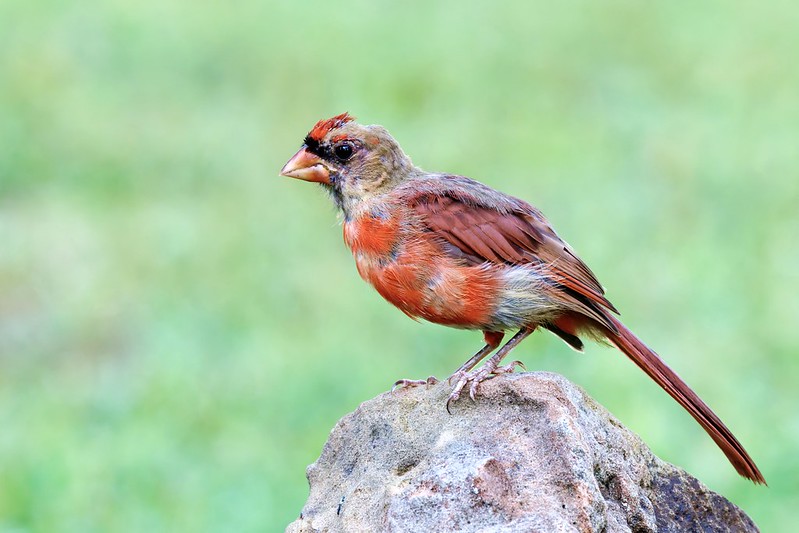Watching backyard birds offers a front-row seat to some of nature’s quiet transformations. This young male Northern Cardinal, photographed in my Arkansas yard, is in the middle of one of the most fascinating: his molt.
Northern Cardinals are known for their striking red plumage, but young males do not start out with such brilliance. Instead, they wear a softer coat of browns and grays. During their first molt, they gradually gain the bold red feathers that make them so recognizable year-round.

The Molting Process of Northern Cardinals
Molting is a natural stage where birds shed old feathers to make way for new growth. For young male cardinals, this process is especially striking. Patchy red feathers begin to appear across their chest and wings, creating a mottled look that shows their transition from juvenile to adult.
In addition to changing their appearance, molting also helps maintain feather health. Fresh plumage provides better insulation and more efficient flight, ensuring the bird stays strong through seasonal changes.
Spotting Young Cardinals in the Backyard
Cardinals are frequent visitors in Arkansas yards, and summer into early fall is often the best time to see young males mid-molt. They stand out because of their uneven coloring, which contrasts with the fully red adult males and the more subdued tan-and-warm-brown females.
If you notice one perched on a branch or rock, like the bird in the photo, take a moment to appreciate this short-lived stage. Within weeks, the patchiness will give way to a sleek coat of vibrant red.
Why Cardinal Molting Matters
Beyond their beauty, cardinals offer a glimpse into the cycles of life that unfold quietly in backyards across North America. The molting process reminds us that growth is not instant but gradual, marked by in-between stages that are just as important as the final transformation.
Photo Details
- Camera: Canon EOS R5 Mark 2
- Lens: RF100-500mm F4.5-7.1 L IS USM
- Aperture: ƒ/8.0
- Exposure Compensation: +1/3
- Shutter Speed: 1/500
- ISO: 2500
